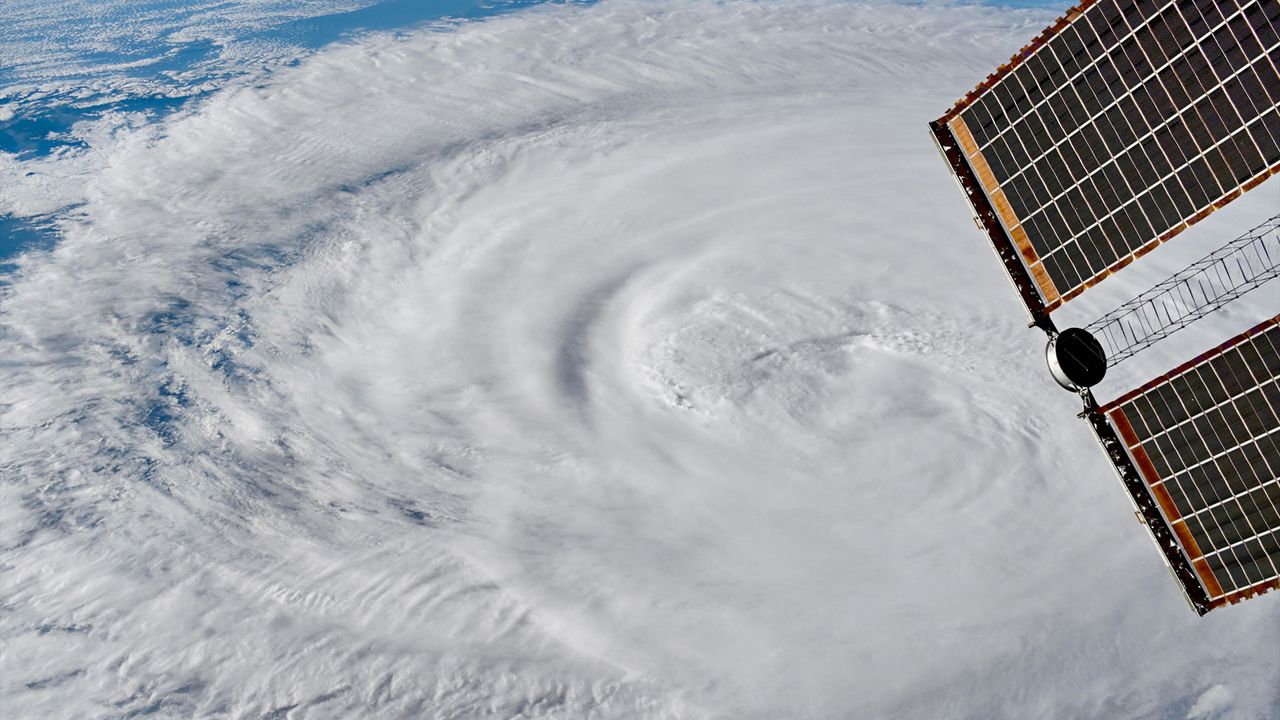Science
Japanese Astronaut Observes Two Typhoons from Space Station

Japanese astronaut Kimiya Yui observed two typhoons from the International Space Station (ISS) during a week marked by ongoing science and maintenance work. His insights came despite a pause in updates due to the U.S. government shutdown. On October 9, 2025, Yui shared his observations on social media, providing a unique perspective from orbit.
Typhoon Observations from Orbit
While flying aboard the ISS, Yui reported seeing both Typhoon 22 and Typhoon 23. He noted that the eye of Typhoon 22 was becoming less distinct but maintained its intensity. “The eye of Typhoon 22 has become somewhat unclear, but it still appears to be maintaining its strong intensity as before,” he wrote. Typhoon 23, located further away, was characterized by “thick rain clouds on its southern side,” according to Yui.
His messages included a reminder for those on the ground to stay informed about the storms: “Stay safe while keeping up with the latest typhoon information!” The dual observations highlight the power of these tropical cyclones, which are known as hurricanes in the Atlantic but have the same classification as typhoons in the Northwest Pacific.
Ongoing Mission Activities
In addition to monitoring weather systems, Yui and his fellow crew members aboard the ISS, known as Expedition 73, engaged in critical preparations for Japan’s upcoming cargo vehicle, the HTV-X. As part of this effort, Yui collaborated with ground controllers to check out the PROX device, which will facilitate the vehicle’s approach for berthing at the station.
Yui expressed enthusiasm about his role: “Preparations to welcome HTV-X to the ISS are steadily progressing. Just like with Kounotori-kun, I’ve been assigned to operate the arm and grasp it this time as well. The responsibility is significant, but I’ll cooperate with everyone to reliably carry out the mission!”
As of October 10, there were seven crew members aboard the ISS, including Sergey Ryzhikov, the Expedition 73 commander from Roscosmos, and astronauts from NASA and JAXA. The station continues to be a hub for international cooperation in space exploration.
Currently, the ISS is home to two crew spacecraft—SpaceX’s Dragon “Endeavour” and Roscosmos’ Soyuz MS-27—along with four cargo spacecraft. The ISS has been continuously crewed for an impressive duration of 24 years, 11 months, and 8 days, showcasing its long-standing role in human spaceflight.
-

 Technology4 months ago
Technology4 months agoDiscover the Top 10 Calorie Counting Apps of 2025
-

 Health2 months ago
Health2 months agoBella Hadid Shares Health Update After Treatment for Lyme Disease
-

 Health3 months ago
Health3 months agoErin Bates Shares Recovery Update Following Sepsis Complications
-

 Technology3 weeks ago
Technology3 weeks agoDiscover 2025’s Top GPUs for Exceptional 4K Gaming Performance
-

 Technology4 months ago
Technology4 months agoDiscover How to Reverse Image Search Using ChatGPT Effortlessly
-

 Technology2 months ago
Technology2 months agoElectric Moto Influencer Surronster Arrested in Tijuana
-

 Technology4 months ago
Technology4 months agoMeta Initiates $60B AI Data Center Expansion, Starting in Ohio
-

 Technology4 months ago
Technology4 months agoRecovering a Suspended TikTok Account: A Step-by-Step Guide
-

 Health4 months ago
Health4 months agoTested: Rab Firewall Mountain Jacket Survives Harsh Conditions
-

 Lifestyle4 months ago
Lifestyle4 months agoBelton Family Reunites After Daughter Survives Hill Country Floods
-

 Technology3 months ago
Technology3 months agoUncovering the Top Five Most Challenging Motorcycles to Ride
-

 Technology4 weeks ago
Technology4 weeks agoDiscover the Best Wireless Earbuds for Every Lifestyle





















